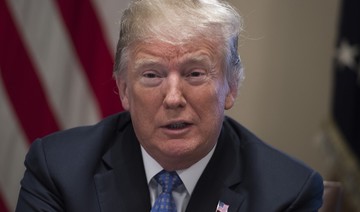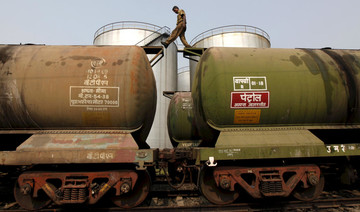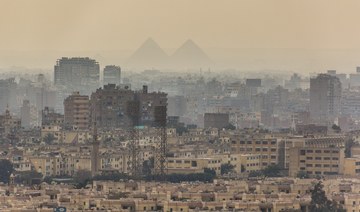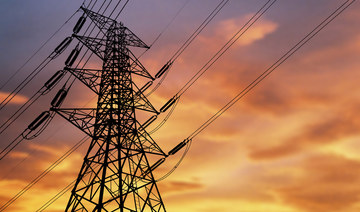Oil prices are unlikely to rise significantly following the reintroduction of some US sanctions on Iran because the market has already priced in the expected reduction in Iranian output, analysts say.
“While there is still some uncertainty about what will happen to Iranian oil, we think there probably won’t be a significant impact on prices,” William Jackson, chief emerging markets economist at Capital Economics, said in a research note.
Brent rose slightly on Tuesday to reach more than $74 per barrel after the sanctions were reintroduced, while WTI edged above $69 per barrel.
US President Donald Trump tweeted on Tuesday: “These are the most biting sanctions ever imposed, and in November they ratchet up to yet another level. Anyone doing business with Iran will NOT be doing business with the US.”
The US sanctions planned for November are expected to affect oil exports.
Hussein Sayed, chief market strategist at FXTM, said he expects oil prices to remain stable.
“I think prices will remain well supported in the near term. However, a break above $80 needs a supply shock, but we are not there yet,” he said in a research note.
While the US wants to reduce Iranian exports to zero by November, the Trump administration still needs to persuade China, Russia and the EU signatories to the Joint Comprehensive Plan of Action (JCPOA) — otherwise known as the Iran deal, to cut ties with the country.
They all still oppose Trump’s decision in May to withdraw from the deal brokered in 2015 and revive sanctions against Iran.
“It’s becoming a difficult guess as to how many barrels will be off the market by then (November),” said Sayed.
Any reduction of Iranian output will be likely offset by increased production by the Gulf producers, said Jackson.
“It does look like the Gulf economies will raise oil output further over the rest of the year under the revised OPEC deal, in part, to offset the impact of lower Iranian output,” he said. In June, OPEC, Russia and other oil-producing countries agreed to increase production from July.
“It is possible that a potential shortfall in Iranian output could be offset from other oil producers, but this is somewhat of a speculative subject and no one will truly know in the near-term,” said Jameel Ahmad, global head of currency strategy and market research at FXTM.
It is, however, the impact of sanctions on regional stability in the Middle East that could be of greater concern than any fluctuations in oil markets, commentators warn.
“The geopolitical implications for the Gulf could present a bigger threat,” said Jackson.
“Tehran might respond to the sanctions by stoking tensions in the region, including in Yemen, Syria and Lebanon.
“Heightened geopolitical tensions appear to be behind the poor performance of the region’s financial markets over the past year. Stock markets have risen by much less than would have been expected given the increase in oil prices,” Jackson said.
Iran and Saudi Arabia have been embroiled in a proxy war in Yemen for more than three years, with Saudi Arabia accusing Iran of supplying arms and support to Houthi forces who are battling against government forces.
“Iran isn’t clamoring for a fight at the moment,” said Naysan Rafati, Iran analyst at the International Crisis Group in Washington DC.
“But if sanctions — and the key here will be the sanctions against Iran’s oil exports — really start to impact Iran’s economy, there is certainly a possibility that Iran will respond,” he said.
He noted Iran’s warning last month about its ability to close off the Strait of Hormuz in retaliation to US pressure. The strait transports around a fifth of the world’s traded oil.
“There are also several flashpoints across the region, from Yemen to the Golan Heights, where we could see an inadvertent clash between Iranian or Iran-backed forces and US allies that leads to a wider escalation,” Rafati said.
Ghanem Nuseibeh, founder of the London-based strategy consultancy, Cornerstone Global Associates, said that Iran’s options for retaliation are limited, in part due to the impact of the sanctions.
“There is little Iran can do. They have failed diplomatically to get the Europeans to stand for them and they are practically facing isolation,” he said.
“Iran may want to intensify supporting its proxy groups in Yemen and other places, but the renewed sanctions will make it difficult for them to both cushion the effects of the sanctions internally and at the same time expand their foreign expenditure to support foreign fighting,” he said.
Neil Quilliam, senior research fellow with the Middle East and North Africa program, at Chatham House in London, countered growing fears that Iran may look to incite more regional instability.
He said Iran will more likely consider diplomatic options to fight back against the US.
“I don’t think they will look to take further action to unsettle the region. Iran will want to ‘isolate’ the US and drive a wedge between the EU3, Russia, China and the US,” he said.
“It will want to demonstrate to the remaining partners of the Joint Comprehensive Plan of Action that it is committed to the deal and wants to continue working with them,” at least until Nov. 4 which is when the US is scheduled to reimpose a further raft of sanctions including those affecting the oil sector, he said.
Oil price seen to ride out Iranian sanctions disruption
Oil price seen to ride out Iranian sanctions disruption
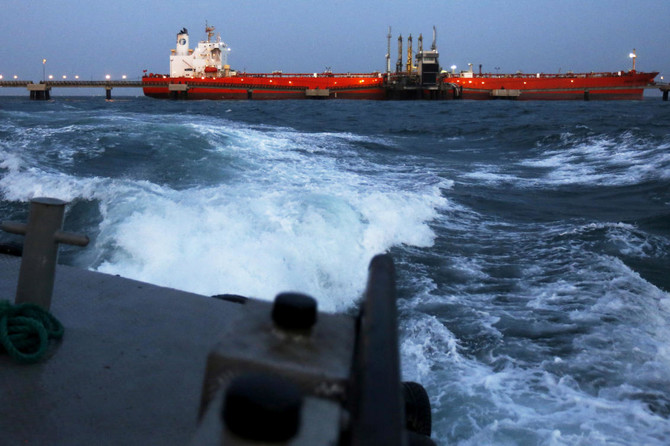
- Brent rises but analysts downplay Iran impact
- Any disruption likely offset by increase in Gulf output
IMF forecasts $14bn increase in Egypt’s foreign cash revenue

RIYADH: Egypt’s foreign cash revenue is projected to surge by $13.7 billion from five key sources this year, a 14.6 percent increase over last year, according to the International Monetary Fund.
This surge is largely due to investments in the Ras Al Hikma City development deal recently signed by the government with ADQ Holdings, as reported by CNBC Arabia.
The IMF projected that foreign cash inflows from these five sources for the fiscal year 2023-2024 will total around $107.3 billion, compared to about $93.6 billion in 2022-2023.
These sources encompass proceeds from commodity exports, tourism revenues, Suez Canal revenues, as well as private transfers and net foreign direct investment.
Despite expectations of an increase in foreign cash revenue from these sources this year, the IMF anticipates inflows to decrease again in the next fiscal year, dropping below the levels of the previous year to approximately $91.2 billion.
The fund forecasts foreign cash inflows from commodity exports to decline to $33.2 billion during the current fiscal year, compared to $39.6 billion last year, reflecting a decrease of about 16.2 percent, with an expected increase to $35.6 billion next year.
It also predicts a decline in Egypt’s tourism revenues during 2023-2024 to around $12 billion, compared to $13.6 billion in 2022-2023, reflecting a decrease of about 11.8 percent, with an increase to around $12.6 billion in 2024-2025.
Furthermore, the financial agency expects a decline in Suez Canal revenues during the current fiscal year to $6.8 billion, compared to $8.8 billion last year, marking a decrease of about 22.7 percent, with an anticipated increase to around $10 billion next year.
As for net private transfers from abroad, they are anticipated to increase to around $23.1 billion during 2023-2024, compared to about $21.9 billion during 2022-2023, reflecting a 5.5 percent increase, and continuing to rise to $24.6 billion in 2024-2025.
Similarly, net foreign direct investment inflows are projected to surge during the current year to around $32.2 billion, compared to $9.7 billion in the previous fiscal year, marking a 232 percent increase, and then decline next year to $8.4 billion.
SEC closes $3bn financing for 3.6GW capacity power stations
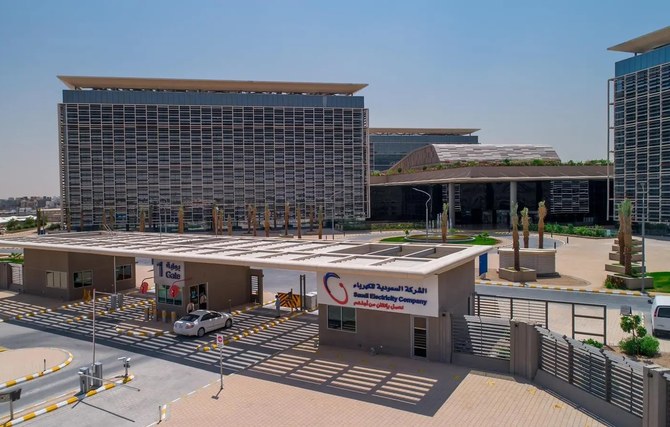
RIYADH: Saudi Arabia’s power generation is poised for a substantial boost following the successful closing of financing for two electricity projects, with a combined capacity of 3.6 gigawatts.
The deals involving the Taiba 1 and Qassim 1 independent power producer projects, with a combined financing value of SR11.4 billion ($3.04 billion), signify a major milestone in Saudi Arabia’s energy landscape, the Saudi Press Agency reported.
The two IPP projects, featuring combined cycle gas turbine technology, were awarded to the Saudi Electricity Co. by the Saudi Power Procurement Co. as part of an alliance with ACWA Power in October 2023.
Additionally, in November 2023, a 25-year power purchase agreement was signed with the SPPC for both projects, which are being developed on a build-own-operate basis.
Khalid Al-Qunun, CEO of SEC, commended the efforts of the company’s team in driving transformation in the electric energy sector in the Kingdom, the SPA report added.
He said: “These projects embody our ongoing ambitions to expand energy generation projects and adopt the latest technologies to ensure the provision of environmentally friendly energy solutions that contribute to achieving the company’s zero neutrality target by 2050, in line with the Kingdom’s ambitious aspirations in the field of energy sustainability.”
The financing agreements were signed by the two project companies: Sidra One for Electricity for the Taiba 1 station and Qudra Energy for the Qassim 1 station. The SEC holds a 40 percent share in both companies.
These modern stations represent a notable advancement in electric energy production in the Kingdom. They signify an important step toward a sustainable future by utilizing the latest energy production technologies, such as combined cycle gas turbines known for their high efficiency.
According to the SPA report, relying on these advanced technologies contributes to improving generation efficiency, reducing emissions, and reducing reliance on liquid fuels in the electricity production sector in the Kingdom.
These stations mark the beginning of a series of CCGT stations that will expedite the realization of Saudi Vision 2030 goals, including achieving an optimal energy mix and increasing local content.
This also sets the stage for achieving the goals of the Saudi Green Initiative, aiming for carbon neutrality by 2060. The engineering design of these stations allows for the future integration of carbon capture facilities, underscoring the SEC’s commitment to environmental, social, and governance responsibility, the SPA report added.
Qatar’s non-energy private sector records improvement in April

RIYADH: Qatar’s non-energy private sector witnesses improvement in business conditions in April as the Purchasing Managers’ Index hit 52, compared to 50.6 in March, according to the latest data.
The Qatar Financial Center PMI is a composite single-figure indicator of non-energy private sector performance that is derived from indicators for new orders, output, employment, suppliers’ delivery times and stocks of purchases. A reading above 50 signifies sectoral expansion, while below that mark indicates contraction.
The latest PMI survey data from the center compiled by US-based capital marker firm S&P Global showed that the 1.4-point increase between March and April in the headline figure was among the largest registered over the past two years, according to a statement.
Moreover, the data disclosed that while output, new orders, employment and purchasing activity all increased at faster rates than in March, price pressures turned slightly negative, as both input and output prices fell marginally.
Additionally, the volume of incoming new business in Qatar’s non-energy economy rose at the fastest rate in seven months in April. This is mainly attributed to new customers and high quality, competitive products.
Total activity also surged at the fastest rate since last September in April as new projects and firms continued to complete existing workloads.
Furthermore, non-energy private sector companies were increasingly optimistic on growth over the next 12 months in April. Companies residing in the Gulf country linked positive forecasts to marketing campaigns, business development plans and efficiency drives.
Consequently, stronger inflows of new work and increased confidence led to a sharper rate of hiring growth in April. Employment has risen for 14 months, and the rate of job creation was running above the long-run survey average in April.
The Qatar PMI indices are compiled from survey responses from a panel of around 450 private sector companies. The panel covers the manufacturing, construction, and wholesale as well as retail and services sectors, and reflects the structure of the non-energy economy according to official national accounts data.
Islamic banking
The total value of the assets of Islamic banks operating in Qatar during the month of March 2024 increased by 6.4 percent on an annual basis to reach about 563.9 billion Qatari riyals ($154.8 billion), according to newly released statistics.
The monetary bulletin issued by the Qatar Central Bank for the month of March showed that this recorded figure represents 28 percent of the total assets of banks in Qatar, amounting to approximately 1.99 trillion riyals.
The data also revealed that the total value of Islamic banks’ financing in Qatar increased to 389.9 billion riyals, an increase of 3 percent over the corresponding month of last year.
Saudi Arabia’s Ades secures $136.2m deals in Qatar, Egypt
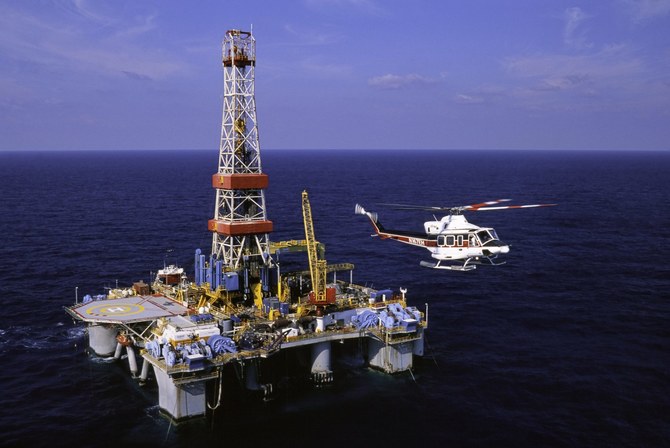
RIYADH: Saudi Arabia’s Ades Holding Co. continues to expand its regional footprint as it seals two contracts worth SR511 million ($136.2 million), highlighting its growing influence in the oil and gas sector.
Ades, which specializes in providing drilling and intervention services, signed a contract valued at up to SR350 million with Total Energies to operate an offshore drilling platform in Qatar.
The agreement includes a mandatory one-year period with an option to extend it for up to an additional 18 months, according to a bourse filing.
Operations are slated to begin in the second half of 2024. The company emphasized that there are no related parties involved in this contract.
This contract comes on the heels of April’s announcement, where Ades was awarded the responsibility to operate another offshore drilling platform by Total Energies in Qatar.
This previous contract enables Ades to maintain its market presence robustly, as it will now operate three drilling platforms in the region.
This expansion comes after the company’s strategic move to transfer its Emerald Driller platform to Indonesia.
Moreover, Ades announced in a separate release that it was awarded a 21-month contract to operate an elevated platform in the Gulf of Suez.
The company received a direct award letter from the Suez Oil Co, also known as SUCO, in Egypt, with operations expected to commence in the coming weeks.
In a statement on Tadawul, the company disclosed that the contract is valued at SR161 million.
This new engagement in Egypt is part of Ades’s broader strategy to reactivate its operations regionally. It follows recent contracts in Thailand and Qatar, bringing the total number of reactivated platforms to three out of the five that were recently suspended in Saudi Arabia.
The publicly traded company saw a slight decrease in its stock price after its announcements.
Saudi government assets to remain strong through 2030: S&P Global

RIYADH: The Saudi government’s assets are forecasted to remain strong amid steady economic diversification efforts aimed at reducing the Kingdom’s dependence on oil, stated a new report.
According to S&P Global, the increasing debt issuance to fund Vision 2030 projects may exert pressure on Saudi Arabia’s net asset position until the end of the decade. However, the Kingdom will mitigate this impact through its wise and prudent fiscal policies.
“S&P Global Ratings expects that growing debt issuance to finance Vision 2030 projects could pressure the sovereign’s fiscal metrics. In our base case, however, we expect the government’s net asset position will deteriorate but remain strong,” stated the credit-rating agency.
It added: “The ramp-up in fiscal deficits and debt could weaken the government’s balance sheet far sooner than returns on investment will accrue. Much will depend on the roles that foreign investment, the private sector, and capital markets will play in financing Vision 2030.”
According to the report, Saudi Arabia’s sovereign wealth fund, spearheading the Kingdom’s economic diversification efforts, aims to invest $40 billion annually in the local economy to bolster Vision 2030 goals.
The US-based firm highlighted that the Saudi government will continue to support the Public Investment Fund in various ways, including funding essential infrastructure for mega and giga project sites.
Domestic banks to play key role
Furthermore, S&P Global added that the Saudi government and PIF will try to boost external funding and diversify the investor base to mitigate the impact on domestic banks’ liquidity.
“We expect domestic banks will still play a key role in funding the public and corporate sectors, given the large size of projects. Domestic banks will likely see a shift from mortgage lending toward corporate lending and Vision 2030 project funding,” noted the credit rating agency.
However, the report added that the Kingdom’s banking system alone cannot accommodate all the financing needs associated with Vision 2030.
Banks in Saudi Arabia will use alternative strategies, such as raising additional external funding, to meet the increasing credit demand.
“In 2023, Saudi banks injected almost $55 billion in the form of investments and financing in the public and corporate sectors, excluding financing to the retail sector. In 2024, we expect banks will grow their lending book by 8 percent to 9 percent,” said S&P Global.
It added: “Under the assumption that 70 percent of that lending is for corporates, banks can inject $40 billion to $44 billion in financing. A portion of that could be used in Vision 2030.”
The report projected an approximate 8 percent increase in deposits for 2024, with external debt issuance expected to reach around $10 billion to facilitate anticipated lending growth.
Earlier this month, another analysis by the agency underscored the robust condition of the Saudi banking sector, highlighting strong asset-quality indicators and overall capitalization.
S&P Global further noted its expectation for banks’ solid profitability and conservative dividend payouts to sustain their capitalization over the next one-to-two years.
The report also noted that Saudi banks have already accessed international capital markets, a trend the credit-rating agency expects to persist for the next three to five years.
Furthermore, the Saudi government and its related entities are anticipated to inject deposits into the banking system, thereby bolstering the credit growth of financial institutions in the Kingdom.
Public and private investment
S&P Global also predicted that certain Vision 2030 projects will extend beyond this decade, facilitating a more organic increase in economic activity and foreign investment.
While PIF and the government will persist in debt-financed investment for Vision 2030, other government-related entities, including portfolio companies of the wealth fund, private-sector participants, and foreign direct investment, will also play crucial roles in implementing economic diversification projects in the Kingdom.
The report underscored that FDI inflows have averaged around 2 percent of Saudi Arabia’s gross domestic product over the past three years, with the Kingdom aiming to increase this to 5.7 percent by 2030.
According to S&P Global, the opening of free economic zones and the regional headquarters program could expedite the growth of FDI inflows in the coming years.
“Future FDI inflows could offer upside on the back of growing investment opportunities and government efforts to improve regulatory and business conditions. These efforts include the opening of free economic zones and a 30-year tax break for multinational companies opening regional headquarters in the country,” added the agency.
It underscored the role of the Saudi capital market in catalyzing the Kingdom’s economic diversification efforts.
The report highlighted that the Saudi exchange is collaborating closely with the Capital Markets Authority to streamline processes and attract both local and international issuers by enhancing market functionality and efficiency.
These initiatives by Tadawul will ultimately enhance the appeal of debt and equity transactions on capital markets and facilitate a more diversified funding base for Vision 2030 projects.
It also noted that the Saudi government possesses additional assets it could leverage to support Vision 2030 and prevent an expanding debt bubble. This includes an 82 percent stake in Saudi Aramco, which boasts a market capitalization exceeding $7 trillion.
“The government has thus far transferred a total 16 percent stake in Saudi Aramco to the PIF and its subsidiaries, which has substantially added to the PIF’s asset base, leading to dividend returns that it can deploy toward Vision 2030 projects. The government could choose to sell further stakes in Aramco through an IPO (initial public offering) to raise additional financing,” added the agency.


